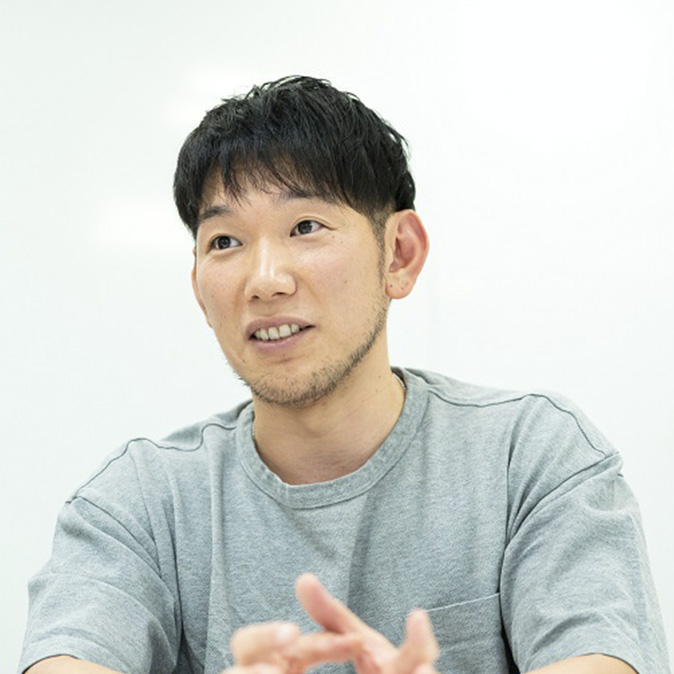- Viewpoints
A “messy motoring melodrama” told in pithy 10-second episodes
10 Sec. Drama: The Stop Line of Love Campaign, is a drama series comprised of 10-second episodes created for JMS (TACTI Corporation), a car accessory and maintenance store. The work, which was rolled out on the company’s website, became a watch-it-once-and-you’re-hooked hit series. It recently won a stunning two Grand Prix awards at Spikes Asia 2019 in the Film and Film Craft categories. We asked Hakuhodo’s Yusuke Kanda and Hakuhodo Kettle’s Genta Ito how they created this highly addictive work.
 From left: Yusuke Kanda (Hakuhodo Inc.), Genta Ito (Hakuhodo Kettle Inc.), creators of “10 Sec. Drama: The Stop Line of Love Campaign”
From left: Yusuke Kanda (Hakuhodo Inc.), Genta Ito (Hakuhodo Kettle Inc.), creators of “10 Sec. Drama: The Stop Line of Love Campaign”A chance to work with my hero, Yusuke Kanda!
Can you tell us what led to you joining Hakuhodo and Hakuhodo Kettle?
KANDA:
I have been in Hakuhodo’s Creative Division since 2015, after working as a commercial planner at Hakuhodo Creative Vox for almost 10 years.

ITO:
I joined Hakuhodo in 2006. After five years handling clients in the digital domain in account service and then as a strategic planner, I was seconded to Hakuhodo Kettle in 2016. Currently I am involved in a broad array of work, from business and communication strategy planning, to measures using digital, and media planning and tracking.
What brought the two of you together?
ITO:
I joined the JMS Team two years ago. The client was about to take a major step in shifting all TV advertising to the Web, and I was involved from the big job of pitching to the company president. I was ecstatic to be able to work with Kanda-san, who is my hero. He had produced countless work that got people talking since his time at Hakuhodo Creative Vox, and was known for his unworldly sensibilities. [Laughs] I had wanted to work with him for ages.

Activity over passivity
ITO:
When I was first contacted, I thought that “activity over passivity” would be a communication strategy that takes advantage of the features of the Web. My thinking was that people who accessed the website would very naturally want to visit again to see the next episode, creating continuity and continuousness, and they would share it to their hearts’ content. When I told the client that I wanted to create an active composition like this, they told me they thought it sounded interesting. As for the content, I left that all up to Kanda-san’s sensibilities. I remember it going to him first of all. We had our minds set on creating something that would be sure to get the social media generation hooked and sharing.
Why did you choose 10 seconds as the length?
KANDA:
As to why we made the episodes 10 seconds, well when we went through the many elements we wanted to incorporate—boosting awareness, creating fans, conveying the broadness of the product lineup and on and on—we incidentally rethought the value of seconds in a video.
Videos shown on owned media are of varying lengths, from several minutes to 30 or even 15 seconds. From many years of making the standard 15-second commercials, I remembered again that a lot of sei-katsu-sha feel that even 15 seconds is too long on a smartphone. I thought that if we went with 10 seconds, we might be able to lower that viewing hurdle.
Rather than introducing the varied product lineup in one long-form video, we thought that short videos that made you want to watch the next episode would be effective in showing different products one after another, and that is how we came up with the idea of a 10-second drama series. Although they are web videos, which tend to play things other than the product up, we thought that composition with products as the punchline in each episode would look fresh.
Making the moment of cutting to the product the peak of laughter
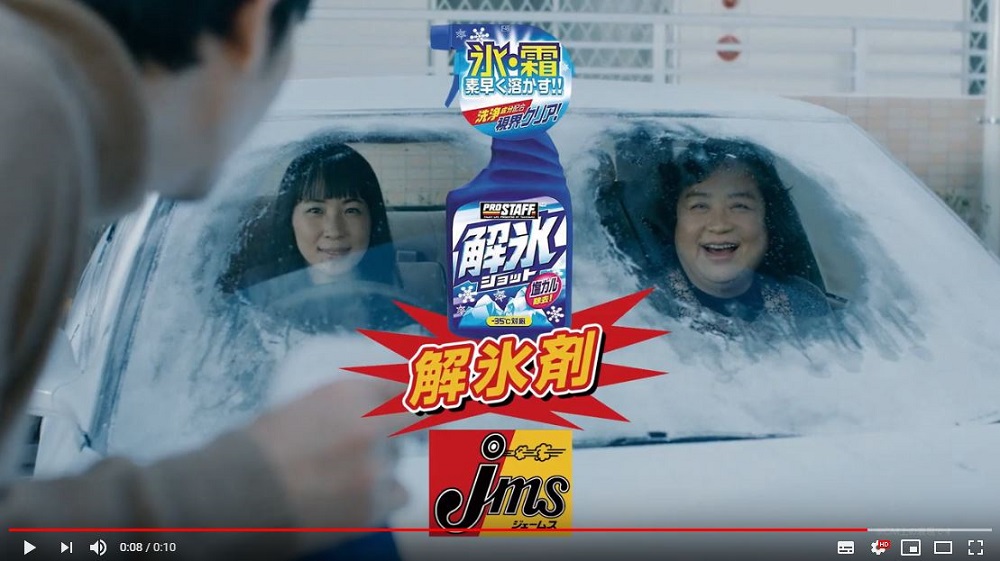
KANDA:
We aimed for the novelty of having the moment the product appears be the point of peak laughter. Because sometimes the cut to the product is boring for viewers. [Laughs] We also thought about various genres where car products could appear seamlessly, such as a secret romance in a car or a mystery, horror or science fiction story involving a car. But we finally agreed that a grown-up romantic drama like a daytime soap opera was the best way to incorporate a car smoothly into every episode.
There are 21 episodes up so far. Is it fair to say you didn’t go in planning to make it continue so long?
ITO:
When we finished the first seven episodes, which had been viewed 10 million times, the series already had lots of fans, but we were asked to give a logical explanation for why the series should be continued. We prepared by collecting tweets from Twitter and the like from people who said they wanted to see what happens next, and took them to the client, along with the recommendation that an additional PR strategy was needed, but the first thing out of the President’s mouth was: “These are great, so let’s keep going.” He said that without even looking at our materials. I was delighted.
Is it true that the President is always in attendance when the creative is decided?
ITO:
The President had previously been the head of marketing and, for this reason, logical thinking is something he does as a matter of course. And that’s probably why he really likes advertising creative. At presentations and meetings, he always pushes us to hurry up and show him what we’ve got for him. [Laughs]
And when we do, he makes decisions quickly. He has a perfect understanding of the entire situation and problems prior to looking at the creative, so he can give us a decision in a flash.
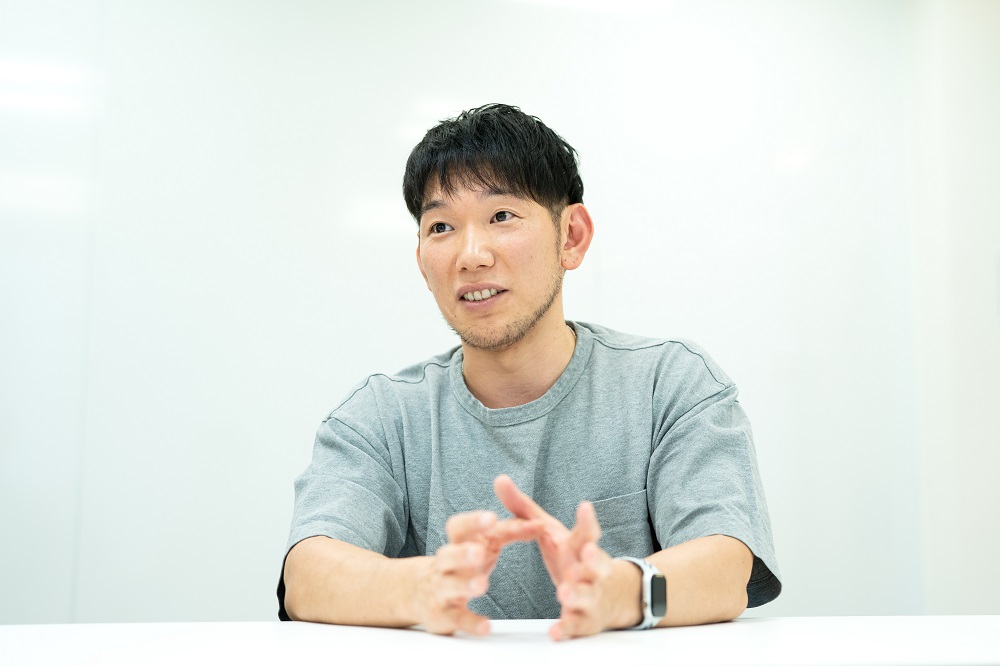
KANDA:
For instance, in episode 17, there is a scene where (pardon my language) “shit” is graffitied on a tire. We thought he would veto the bad language and had prepared another scene where a message was written on the windshield in lipstick. But when we showed him it, the President said, “No, no lipstick. It will give the wrong impression. I have no problem with having ‘shit’ on the tire, though.”
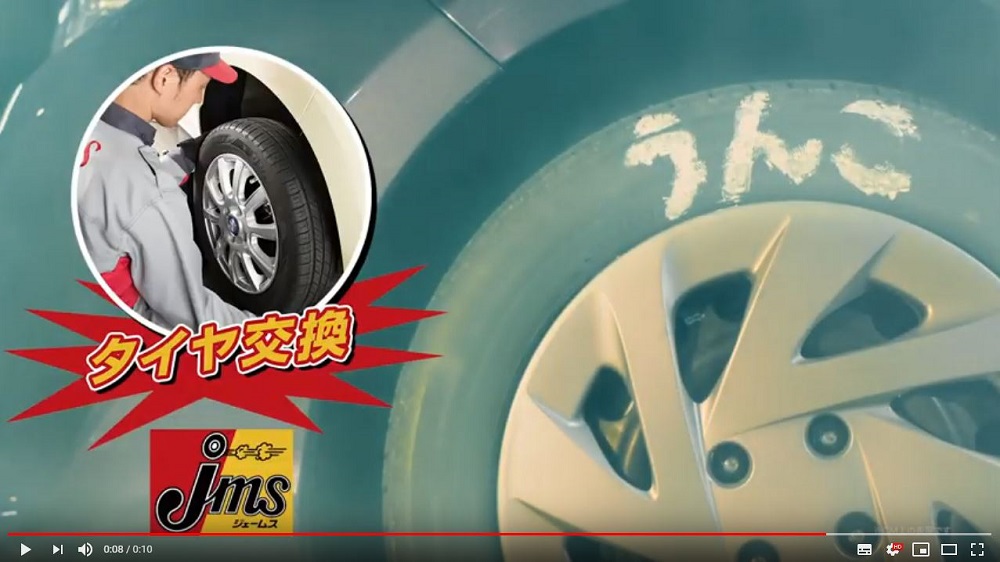
ITO:
Every time I speak to him, his intuitive decisions are always clear. He’s remarkable.
What troubled you the most?
KANDA:
The 10-seconds challenge, which I caused myself, was super-tough. [Laughs] Interesting stories, depicting even subtle emotions, story continuity and having a product punchline in every episode… As the series went on, it did present its difficulties, but it was a meaty challenge to chew on.
There are many products in the stores, but could you feature any product you wanted?
KANDA:
It’s not as if we could drop in the products we wanted whenever we wanted. The seasons come into play, as some tires, say, can only be used in the winter. We asked the client to give us some products they absolutely wanted us to use in the videos, and we showcased a lot of other products as well. I choose the products based on how they linked with the story and how easy their benefits were to understand. The thinking process when coming up with a proposal takes about a month, in which we take two approaches to the planning: coming up with a story totally disregarding the products, and thinking simultaneously about the story and how to incorporate products into.
ITO:
I had seen how hard Kanda-san worked to connect the story to the products, so it was so tough when the client looked at a proposal that had finally come together and said, “We want you to change it to this product.” [Laughs]
KANDA:
Sometimes it would fit perfectly, sometimes we needed to wipe the slate clean and start again. We have a storyline, so if you shift the order of a product, the whole thing comes apart. You can’t just slot a different product in and that is a problem. Recently, we were told, “We’re going to run out of products to feature soon.” [Laughs] But we are currently up to episode 21, and will shoot episode 22 this month. Look out for it.
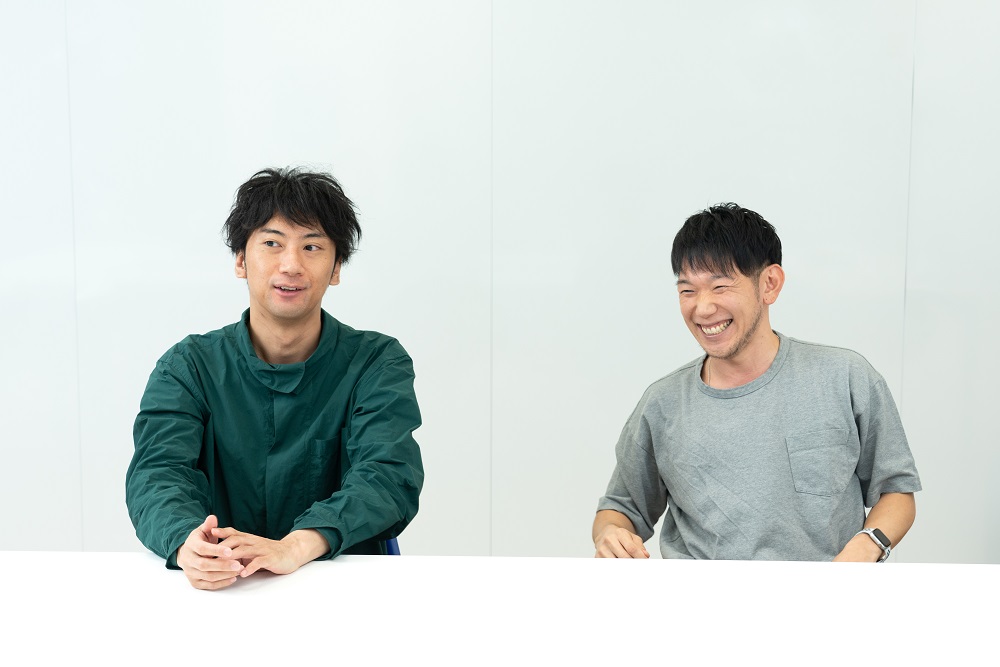
Joy at being praised by the actors
Has anything happened during production that made you happy?
KANDA:
I was happy when everyone from the President of TACTI to the people at the shoot told us [the series] was fun and when the series became a hit and won all kinds of awards. But in terms of something that happened that made me feel happy, that would be when the actors praised our plan on location, saying: “You’re doing well to fit all these amusing elements into 10 seconds. It’s incredible.” I’ve almost never had actors praise a plan when we’re on location creating advertising. I felt like they understood how difficult it was to fit everything into 10 seconds and it was reward for all the hard work.
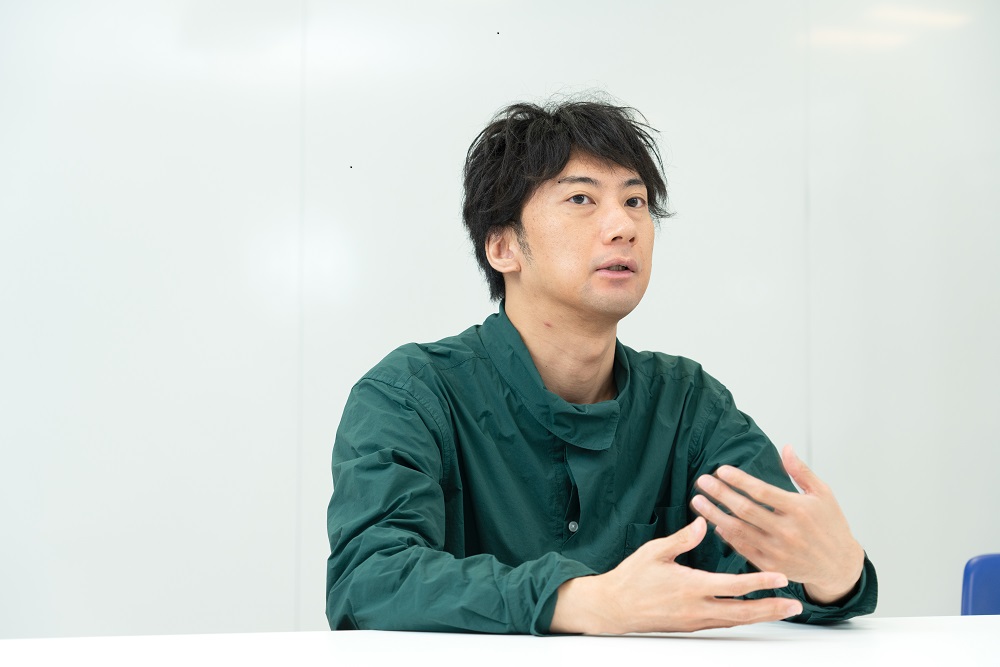
ITO:
For me, too, it was after a shoot when an actor said: “Good work. When’s the next one? I’m looking forward to it.” It was so cool.
You mentioned awards. The work has now won a slew of awards, but how did international judges rate it?
KANDA:
Apparently, it was the first time a Japanese person had won the Grand Prix in two categories (Film and Film Craft) at Spikes Asia. One judge said: “Stuffing so many elements into 10 seconds and making it funny takes craft.” Another said: “Creating it without running from all the products that appear was the right way to do it.”
ITO:
I hear after we won the awards that the judges were just killing themselves laughing. And they were even impressed with the way the script was written, amazed at how we had used the products as the punchlines.
So the worldview was a hit with non-Japanese judges, then?
ITO:
That was a surprise. Because they seemed to be pedestrian Japanese gags. Adding English translations to the entry video was actually really difficult.
KANDA:
Right. The nuances of Japanese and English are different.
ITO:
For instance, even the single term bucho [division head] is not the same as “boss.” A bucho might have a title with “senior” in it, something I went back and forth with Kanda-san about for ages. In the end we went with boss, though.
KANDA:
That sort of thing is just something you have a sense about, but it was really helpful that Ito-san can speak English. If you just translated it normally, it would somehow sound mechanical. People who properly understand creative content and can choose the right words are like gold when it comes to international advertising competitions.
Effects of winning awards
What is the significance of entering and winning awards?
KANDA:
Quite a few people are against going for awards, but I think it’s a good thing.
Creatives who have risen to the level where they can win awards are rated in society, and can become big news and more appreciated. This goes particularly in the case of commercials. Communicating broadly to society is advertising’s job, so when you think about what to use as a benchmark for having a finger on the pulse of society, the ability to win awards is an easy-to-understand yardstick.
It becomes a gauge, so it’s good to try, then?

KANDA:
Yes. It’s better to aim for them.
Winning awards gets the work and company known, and one KPI of the TACTI work in particular this time was to increase awareness. After the work started winning awards it was reported in the news, bringing it to the attention of lots of people, contributing to achieving that goal. Also, in the case of video, the number of people who search for and come to see it increases, which is another positive effect.
ITO:
Rather than going after awards simply because you’re a creator, I think it’s better to go for them because you have a goal: like Kanda-san said, making the client happy, too. Getting the creator’s name out there is obviously another side effect of that.
Some clients say that ad agencies create ads to win awards. When we consider JMS’s communication, they made us part of their team and created an environment where we all worked together to achieve the same goals, and then shared our delight with the wins as their own. I think that that is a good way to go “fishing for awards.”
So the President was delighted, then?
KANDA:
He was absolutely thrilled.
ITO:
We have about four opportunities a year to make presentations to the President, sometimes at Hakuhodo Kettle, and he looks forward to those occasions.
We look forward to what comes next. Thank you for your time

